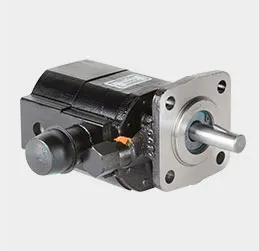brass pressure die casting
Understanding Brass Pressure Die Casting A Comprehensive Overview
Brass pressure die casting is an advanced manufacturing process that allows for the creation of intricate and precise metal components. This technique is highly favored in various industries due to its efficiency, versatility, and the superior qualities of brass. In this article, we will explore the processes involved in brass pressure die casting, its advantages, and applications across different sectors.
The Process of Brass Pressure Die Casting
Brass pressure die casting involves forcing molten brass into a mold cavity under high pressure. This process begins with the preparation of the brass alloy, typically a combination of copper and zinc, which is heated to a molten state. The molten brass is then injected into a steel die that is precisely machined to create the desired shape of the final product.
The key to this method lies in the pressure used during the injection. High pressure ensures that the molten metal fills every detail of the mold, resulting in components with smooth surfaces and fine details. Once the metal cools and solidifies, the mold is opened, and the finished part is ejected. This rapid cycle of heating, injection, cooling, and ejection allows for high production rates, making it an efficient choice for large-scale manufacturing.
Advantages of Brass Pressure Die Casting
1. Precision and Detail One of the most significant advantages of brass pressure die casting is the ability to produce highly intricate designs with tight tolerances. This level of precision is crucial in industries such as aerospace and automotive, where component performance is paramount.
2. Surface Finish Parts produced through this process often have excellent surface finishes that require minimal machining. This not only saves time but also reduces costs associated with secondary processing.
3. Material Efficiency The die casting process generates minimal waste compared to other manufacturing methods. The ability to reuse scrap metal contributes to lower material costs and enhanced sustainability.
4. High Production Rates Once the die is created, parts can be produced rapidly, making it ideal for high-volume production. The quick cooling of brass also reduces cycle times, further enhancing productivity.
brass pressure die casting

5. Strength and Durability Brass components produced by die casting exhibit remarkable strength and resistance to corrosion, making them suitable for various applications, especially in environments where exposure to moisture is common.
Applications of Brass Pressure Die Casting
Brass pressure die casting is widely utilized in numerous sectors due to its advantageous properties. Here are some notable applications
- Automotive Industry Components such as fittings, brackets, and housings are manufactured using brass die casting. The corrosion resistance of brass makes it an ideal choice for various automotive parts that require durability and fidelity over time.
- Aerospace Precision-engineered brass components are critical in aerospace applications, where specifications must meet rigorous safety and performance standards.
- Electronics Brass die casting is also common in the production of parts for electrical connectors, switches, and housings, where conductivity and durability are essential.
- Plumbing and HVAC Many plumbing fixtures, valves, and fittings are manufactured from brass, leveraging its resistance to rust and its strength.
- Decorative Items In addition to functional parts, brass die casting is popular for decorative hardware, such as knobs, handles, and fixtures, valued for both aesthetic appeal and durability.
Conclusion
Brass pressure die casting is a sophisticated manufacturing process that combines precision, efficiency, and strength. Its ability to produce complex shapes with exceptional surface finishes has made it indispensable in various industries, including automotive, aerospace, electronics, plumbing, and decorative arts. As technology continues to advance, brass die casting will undoubtedly evolve, further enhancing its applications and benefits in modern manufacturing.
-
Top Extras Casting Solutions Die Casting and Sand Casting Experts High-Quality Casting and Die Casting ServicesNewsJun.10,2025
-
Top SS Casting Manufacturer Aluminum Die Casting Manufacturer China Precision Die Casting Company SupplierNewsJun.10,2025
-
High-Quality Brass Casting Sand for Precision Sand Casting Brass at HomeNewsJun.10,2025
-
Affordable Aluminum Sand Casting Solutions Custom PartsNewsJun.09,2025
-
High-Quality China Sand Casting Services Cost-Effective & ReliableNewsJun.09,2025
-
Premium Hot Stamping Parts Durable Plastic Decor SolutionsNewsJun.09,2025















